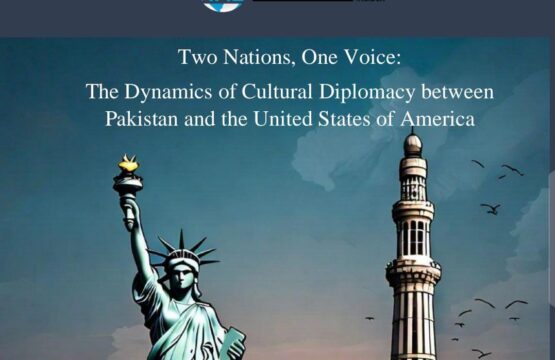In the rapidly changing, interconnected world, energy politics are shaping global geopolitical arenas. As we have seen, energy politics play a pivotal role in shaping international relations, economic stability, and shifts in power dynamics. A significant amount of energy dependency relies on non-renewable resources, while the world’s growing demand for energy is causing competition to secure these resources and demonstrating global dominance in energy resources. This comprehensive analysis will delve into the complex web of global energy politics and will highlight the significant themes that revolve around global energy politics.
Before proceeding, we need to understand what energy means and why it is crucial. In simple terms, energy is something that provides power to do work, such as running industries, providing electricity to households, and supporting military operations.
Sources of Energy
There are mainly two primary sources of energy:
- Renewables
- Non-renewables
Renewable energy is a source of energy that is non-consumable and does not cause any harm to the environment. For example, energy production comes from wind, solar, biomass, hydel, and geothermal. There is a minimal role of energy politics in Renewable Energy, i.e., the shift from fossil fuels towards clean energy due to the ongoing debate of global warming and climate change. In contrast, global energy politics mainly occurs in the sphere of non-renewable energy sources, such as coal, oil, and gas. As most energy production comes from these non-renewables, global energy politics take place in the shape of cooperation and competition between the producers and consumers of energy. Additionally, cooperation is for securing continued energy supply to fulfill needs, while competition is for owning and distributing these resources.
Central Themes of Global Energy Politics
Russia-Europe Energy Conflict
Europe is facing crises in the form of scarce energy resources resulting from the Russian invasion of Ukraine. Europe imports 40% of its gas and around 36% of oil from Russia. While it is argued that Russia uses its energy exports as a political tool, Russia demands the following from Europe:
- Russia wants Eastern Europe to be friendly towards Russia. This is because Russia was attacked several times from the eastern part of Europe, i.e., Napoleon (1812) and Axis powers in WWI and WWII.
- Russia does not want any expansion of NATO in Eastern Europe, as Russia sees this expansion as a threat to Russian sovereignty.
- Russia also opposes the expansion of the E.U. in East Europe.
- Lastly, the U.S. is deploying defense missile systems in Türkiye, Poland, and the Czech Republic under NATO’s umbrella, which is not suitable for Russia, which does not accept such projects in the region.
Russia’s Strategic Energy Politics for Achieving Objectives
According to the 2022 report, Poland was heavily dependent on Russian energy imports. Poland imports its 76.3% of oil, 45.4% of natural gas, and 13.4% of coal from Russia. This energy import was banned by the Polish government when the government passed a bill prohibiting the import and transport of Russian fuel. The last transports were registered in May 2022. Ukraine was importing a total of 75% of gross energy imports from Russia before Russia attacked Ukraine in 2022.
Russia uses its energy imports as a political tool, as Russia has increased its gas prices for East European countries. It is to be noted that there is currently no organization responsible for regulating gas prices. For example, in 2016, in Russia, in response to the deployment of U.S. defense missile systems in Poland, gas prices increased by up to 80% for Poland. Additionally, when Ukraine applied for E.U. membership, Russia responded with the face of annexation of Crimea by invading the Crimean Peninsula, part of Ukraine. Furthermore, Russia also increased gas prices by up to 100% in 2013. Russia also pressured Ukraine to pay deferred payments of $12 billion.
Energy Politics in the Middle East: Influence of U.S., China, and Russia
The Middle East is a key region that accounts for a significant portion of the world’s oil production in the global oil market. The region has an abundance of untapped natural resources, allowing immense potential for the region’s development. However, one can argue that these resources are the causes of instability in the region. For example, Iran and Saudi Arabia conflict over oil pricing and production. Iran demands that OPEC be permitted to export more oil while maintaining prices at an elevated level. But for that reason, Saudi Arabia has to limit its oil production. On the contrary, KSA opposes Iran’s demand and prefers maintaining moderate oil prices without limiting their oil production.
The United States is also interested in energy in the Middle Eastern region. For the U.S., Middle Eastern countries like UAE, Saudi Arabia, and Jordan are close allies of the U.S. According to the report, the U.S. imports 10% of oil from this region. Additionally, the U.S. views Iran as a threat to its allies and seeks to contain Iran in the region by imposing several sanctions, causing a halt to Iran’s development. Thus, the U.S. calls this action to secure the region’s stability, ensuring continued oil supply. Secondly, the U.S. also opposes China’s rise in the region.
China’s Interest in the Region
In the case of China, there is a great debate that this internal strife in the Middle East is ultimately benefiting China by allowing it to extend its influence in global oil markets and potentially moving towards making Yuan a petro-currency, a significant oil trading currency. China is the biggest oil importer from the region, as it imports 73% of its oil, whereas 60% comes from the Middle East. It is worth noting that in the past two years, China bought 87 percent of Iran’s oil exports last month.
Furthermore, China wants to continue its oil supply in the region. Thus, Chinese petrochemical industries are significantly investing in the Middle East. Aramco recently acquired shares in Rongsheng petrochemicals, and China’s National Petroleum Corporation is investing in Abu Dhabi’s National Oil Company. China is also exercising its soft power in the region. Saudi-Iran reconciliation is a great example of China as an international mediator for strengthening peace in the Middle East.
Russian Interest
Russia’s primary interest in the region primarily focuses on sustaining oil production levels while ensuring stability in the oil prices. Russia mainly does this by signing different pacts with the countries in the region as it approaches Saudi Arabia to maintain oil prices. Furthermore, the COVID-19 pandemic heavily impacted the global crude oil markets, as international oil demands and restrictive supply caused disruption in oil markets. Thus, the world has witnessed a Russia-Saudi Arabia conflict over oil prices during the pandemic (Richie, Tao, and Yukun, 2021).
Syrian Conflict: Energy Politics in the Region
The Syrian Conflict, which has been going on since 2011, is intricately tied to energy politics in the region. This civil war in Syria has caused immense suffering and loss of life, causing chaos in the region. In 2009, Qatar proposed a gas pipeline that would run through Syria and Türkiye to Europe. At the same time, Assad’s regime signed a pact with Iran and Iraq to run a gas pipeline to Europe.
It is worth noting that the United States has thrown its support behind a gas pipeline from Qatar through Syria and Türkiye to Europe, a move aimed at reducing Europe’s reliance on Russian energy imports. In contrast, Russia endorsed a competing pipeline that originates in Iran, passes through Syria, and leads to Europe. Syria occupied a pivotal position as a common point on both pipelines, earning them the monikers of the “Sunni pipeline” from Qatar and the “Shia pipeline” from Iran. These pipelines are commonly referred to as the Shia and Sunni LNG pipelines.
Notably, Syria preferred Russia and Iran, showing interest in their partnership. Scholars argue that the underlying cause of the Syrian Conflict revolves around securing energy supplies through these pipeline projects, highlighting the crucial role of energy geopolitics in triggering the Conflict. Since 1991, Russia has kept itself out of any conflict. As NATO attacked and bombed Serbia in 1999, Russia did not intervene directly in the response to NATO’s attack. However, Russia showed its most significant interest in Syria as support to the Iranian gas pipeline running eastward, proving the theory that the Syrian Conflict is because of securing energy.
Region of Great Game: Central Asia’s Energy Politics
The Central Asian region is known as the “Great Game” due to its abundant natural resources, particularly in the energy sector. This region, which includes countries like Kazakhstan, Uzbekistan, Turkmenistan, and Tajikistan, has significant oil and gas reserves highly coveted by major global powers. As a result, there is intense competition among countries such as the United States, China, and Russia to reach and secure access to the region’s valuable resources (Martha Brill Olcott, 2010). This competition is driven by the need for energy resources to fuel their own economies and ensure their energy security. Additionally, these countries recognize the economic potential of controlling the production and export of energy resources.
Also Read: U.S. Ambassador urges Ukraine’s defense against growing threats.
Moreover, the region’s instability and geopolitical conflicts further amplify the need for foreign investments to extract these resources. The future global and regional energy security is likely to be endangered not by a shortage of resources but rather by supply disruptions and the availability of tradable resources, such as oil and gas. These disruptions can arise from growing terrorism and geopolitical conflicts. Pakistan, with its strategic position and importance in the region, is influenced by and undermines its energy security (Zurdinov, 2022). It has the potential to serve as a corridor for regional energy trade, but its involvement in major geopolitical expeditions makes it highly exposed to potential terrorist attacks.
East Asian Region Energy Politics: Role of South China Sea
In the East Asian region, global energy politics mainly revolves around the South China Sea. It is to be noted that the South China Sea accounts for more than 60% of global maritime trade and 22% of total international trade. The United Nations Conference on Trade and Development (UNCTAD) also estimates that the South China Sea accounts for one-third of global shipping routes. Furthermore, the Center for Strategic and International Studies (2019) noted that approximately $3.4 trillion of trade passed through the South China Sea in 2016. The region is expected to have around 220 billion barrels of oil reserves and a mass presence of gas and hydrocarbon reserves.
Importance of the South China Sea
The South China Sea holds an essential maritime trade crossroad role for the world’s biggest economies to conduct their trade globally. China claims 80% of this region under Chinese territory. China conducts around 60% of its trade through maritime trade. Therefore, China’s economic security is closely linked to the marine dominance of the South China Sea. If China’s claim regarding the South China Sea is accepted, it will help China achieve China’s Maritime Silk Road Initiative (MSRI). Furthermore, China will benefit as this region will become the world’s largest exclusive economic zone (EEZ). As discussed above, the South China Sea holds an abundance of untapped oil and gas resources that may be used to offset China’s energy exports and help the country become energy self-sufficient.
In response, the United States is opposing China’s dominance over the region. In recent years, China has increased its efforts to access natural resources and started building new islands, military installations, airstrips, and ports in the South China Sea. The United States, to protect its security and economic and political interests in the region, has challenged China’s claim over the region and constructed new islands in the South China Sea. The United States started to support its allies in the Southeast Asia region, i.e., Japan sold military equipment to the Philippines and Vietnam to improve their maritime security and deter China’s presence in the disputed region.
Shaping Global Energy Politics: Insights from Africa
Lastly, energy politics in the African region also play a pivotal role in shaping global energy politics. The region holds abundant natural resources such as oil and gas, which is why it has attracted the attention of major international players. The United States is keen on bolstering its African military presence to secure alternative energy sources outside the Middle East. The U.S. imports oil from critical players like Nigeria and Angola, underscoring its strategic interest in the region’s reserves.
In parallel, China has emerged as a significant player, exerting its influence through substantial investments and trade partnerships across Africa. For example, China accounts for approximately $200 billion annually in trade with Africa. China’s significant economic collaboration and oil exploration ventures in Nigeria’s southern region underscore its increasing influence compared to the United States.
Conclusion
To conclude the discussion, it is essential to understand that energy and politics are closely tied together in today’s global world. Since energy drives the economy, energy plays a covert role behind the veil wherever politics exists.
Sources
Andrew Dessler (2022). “How greed and politics are slowing the switch to renewable energy,” Bulleten of the Atomic Scientists, 17 January 2022.
Online: https://thebulletin.org/2022/01/how-greed-and-politics-are-slowing-the-switch-to-renewable-energy/
Casier, T. (2016). Great game or great confusion: The geopolitical understanding of EU-Russia energy relations. Geopolitics, 21(4), 763-778.
Blank, S. (2011). Russian Energy and Russian security. Whitehead J. Dipl. & Int’l Rel., 12, 173.
Stegen, K. S. (2011). Deconstructing the “energy weapon”: Russia’s threat to Europe as case study. Energy policy, 39(10), 6505-6513.
Ken Roberts (2023). “Middle East Oil Imports, At 20% Of U.S. Supply 5 Years Ago, Now at 10%,” Forbes Publications, 28 December 2023.
Ma, R. R., Xiong, T., & Bao, Y. (2021). The Russia-Saudi Arabia oil price war during the COVID-19 pandemic. Energy Economics, 102, 105517.
Olcott, M. B. (2005). The Great Powers in Central Asia. Current History, 104(684), 331-335.
Zurdinov, A. (2022). PAKISTAN AND CENTRAL ASIAN REPUBLICS: COOPERATION AND OPPORTUNITIES TRADE AND ENERGY CORRIDORS: A RECIPE OF PROSPERITY FOR PAKISTAN AND CARs. Central Asia (1729-9802), (91).
Ahmad, Shoaib & Mohaimen Nawab (2023). “South China Sea Militarization: Analyzing Chinese and U.S. Interests,” Journal of Global Peace and Security Studies 4(1), pp. 12-26
Bush, Richard (2016). “The South China Sea ruling and China’s grand strategy,” Brookings Institution, 13 July 2016.
Online: https://www.brookings.edu/articles/the-south-china-sea-ruling-and-chinas-grand-strategy/
Center for Strategic and International Studies (2019). “How much trade transits through the South China Sea?” China Power Project, 2019.
Online: https://chinapower.csis.org/much-trade-transits-south-china-sea/
Cordesman, Anthony, Arleigh Burke & Max Molot (2019). “The Critical Role of Chinese Trade in the South China Sea,” in: China and the U.S.:Cooperation, Competition and/or Conflict – An Experimental Assessment Report. Center for Strategic and International Studies, November 2019.
Online: http://www.jstor.com/stable/resrep22586.30
Rauf, Abdul (2023). “The Impact of China’s Maritime Expansion on Regional Security,” Journal of Global Peace and Security Studies 4(1), pp. 46-55
Romaniuk, Scott & Tobias Burgers (2019). “China’s Next Phase of Militarization in the South China Sea,” March 2019.
Online: https://thediplomat.com/2019/03/chinas-next-phase-of-militarization-in-the-south-china-sea/

A student of Governance and Public Policy, passionate about exploring world affairs, geopolitics, and diplomatic intricacies. Also through insightful research, aiming to contribute to global governance and diplomacy.








One response
Such an amazing article! hope for more like these ❤️